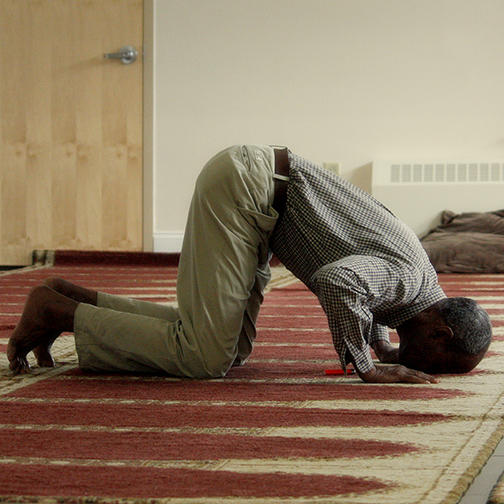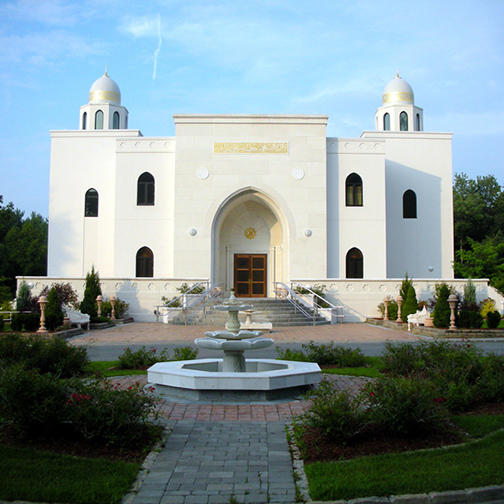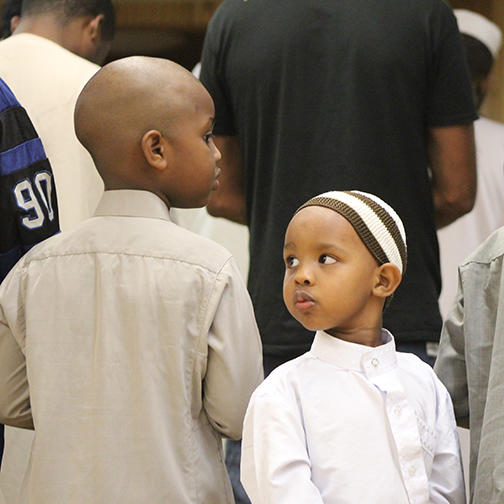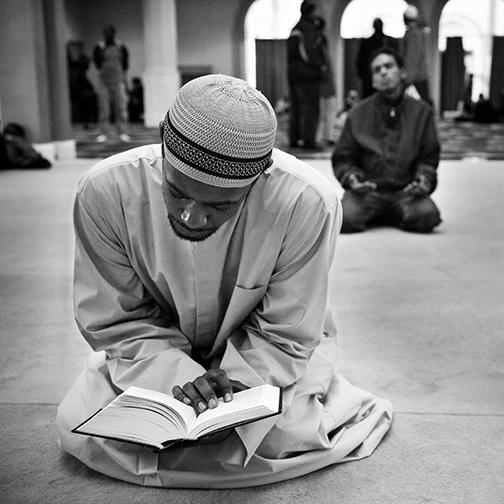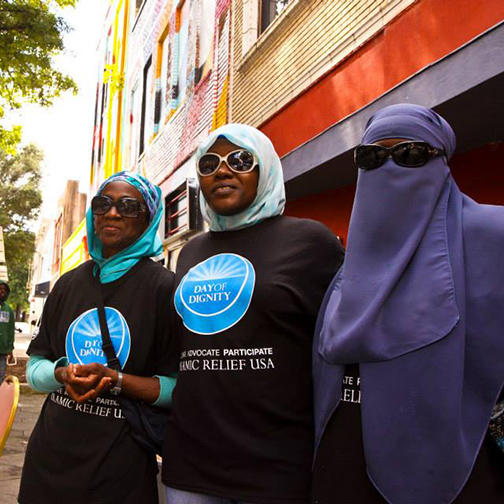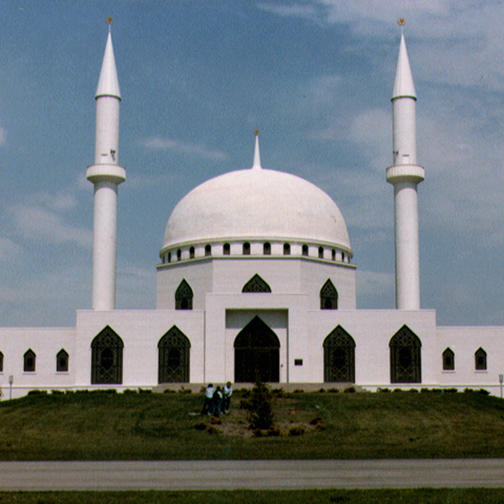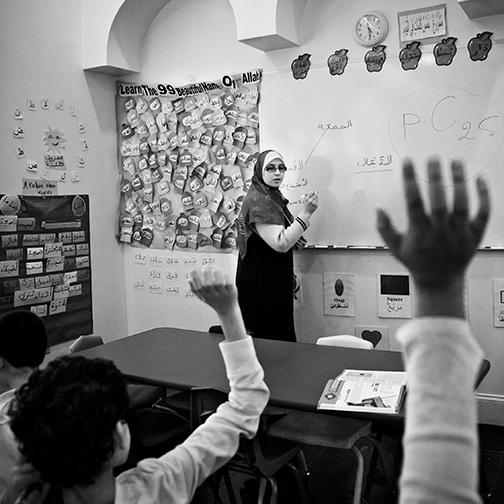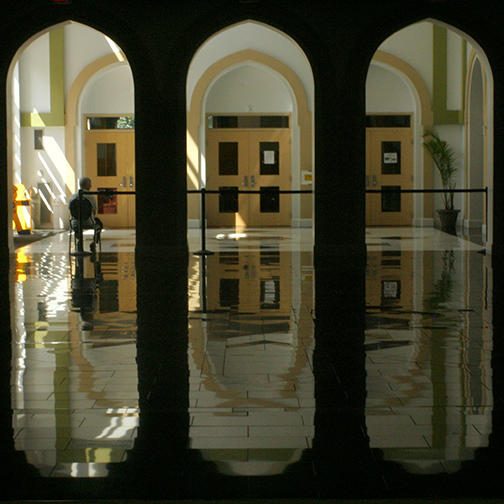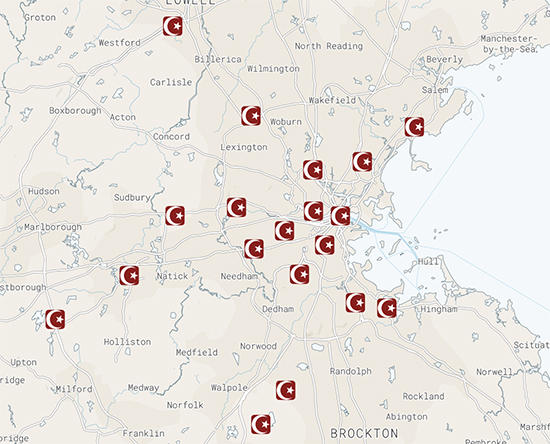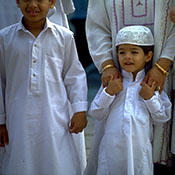 Islamic faith expressions and rules guide a Muslim throughout the life cycle: from birth, daily life and activities, to death and burial.
Islamic faith expressions and rules guide a Muslim throughout the life cycle: from birth, daily life and activities, to death and burial.
Islam
Islam
Islam
Essays
The Call of Islam
Islam Means Being “Muslim”
Qur’an: The Word of God
Muhammad: The Messenger of God
One Ummah with Many Views
Sunni and Shi’i Interpretations
Sufism: Seeking God
Shari’ah: Following the Straight Path
Islamic Practices
Islamic Beliefs
Expansion of Islamic Civilization
The Rise of European Colonialism
Resurgence and Migration: The Muslim World Today
The Call To Prayer
Salat: Daily Prayers
Jum’ah: The Friday Prayer
Mosque, Minaret and Mihrab
Calligraphy and Islamic Design
Ramadan and Eid al-Fitr
Pilgrimage and Eid al-Adha
Shi’i Remembrance of Husayn
Becoming a Muslim
Qur’an and Qur’anic Recitation
Remembrance of God: The Sufi Circle
Birthday of the Prophet: Mawlid al-Nabi
Birth To Death
Muslim Media
Halal Food
Islam Timeline
Islam in the World (text)
570-632 CE Life of the Prophet Muhammad
Born in the city of Makkah on the Arabian Peninsula, Muhammad works as a merchant until he one day hears the voice of an angel commanding him to “Recite!” and declaring that he has been chosen as the Prophet of God. After this day, he continues to receive revelations, which he recites to his wife Khadija and a small group of followers. He dies having united many of the Arab tribes under the banner of Islam.
632 – 661 CE Expansion and Division Under the First four “Righteous” Caliphs
Under Abu Bakr, the Prophet’s first successor, rebel Arab tribes submit to his authority, The second caliph, ‘Umar, establishes military regimes to govern Egypt, the Fertile Crescent, and much of Iran. ‘Uthman standardizes the text of the Qur’an and expands the empire. ‘Ali, the son-in-law of Muhammad and considered the first Imam by Shi’i Muslims, presides over a community increasingly divided after the murder of ‘Uthman.
661 – 750 CE Umayyad Dynasty Rules from Damascus
Political and military power shifts to Damascus when Mu’awiyah assumes the caliphal seat. Syrian Arabs lead expansion into Spain and India as a centralized administration is developed.
680 CE Battle of Karbala and Death of Husayn
The Umayyad caliph Yazid I succeeds his father, and his troops crush a rebellion by ‘Ali’s son, Husayn. Shi’i Muslims commemorate this event every year with various devotional rituals, the martyrdom of Husayn, who became the symbol of righteous Shi’i resistance.
750 – 1258 CE Abbasid Dynasty Rules from Baghdad
Abbasid forces defeat the Umayyads of Damascus, but some escape to Spain where the dynasty continues to rule in Cordoba until 1037.The Abbasids establish Baghdad as the new center of political, cultural and religious power.
750- 1492 CE Arab Rule in Spain
In 756, Cordoba becomes the capital of Muslim Spain, and by the 10th century, Cordoba is Europe’s largest city. Other Spanish cities, such as Toledo and Seville, flourish under Muslim rule during the 10th-13th centuries, which some scholars argue laid the groundwork for the European Renaissance.
878 CE Twelfth Shi’i Imam goes into Occultation
The eleventh Imam, Hasan al-Askari, dies in 873, leaving behind a son said to be the Mahdi, a messianic figure. However, the young son disappears shortly after his father’s death. He is said to remain alive in the unseen realm by the decree of God and is expected to return as the Mahdi.
909 – 1171 CE Ismaili Fatimid Dynasty
The Fatimids establish their dynasty in North Africa in 909, conquering Egypt in 969. From their newly-established capital city of Al Qahira (Cairo), the Ismaili Fatimids create significant educational and cultural institutions. Al Azhar, the oldest university in the world, is founded in 970.
1076 CE Rise of Muslim Empires in West Africa
Islamic influence spread southward from North Africa, and by 1076, Ghana came under rule of the Almoravids. From the 12th to the 14th century, the Malian Kingdom flourished in the upper Niger region. During the 14th and 15th centuries, the city of Timbuktu became one of the most important centers of learning in all of the Muslim world, with over one hundred Qur’anic schools and many private libraries.
1099 – 1187 CE Capture and Liberation of Jerusalem
In 1099, the capture of Jerusalem by the armies of the First Crusade leads to the deaths of Muslims, Eastern Christians, and Jews, as well as the desecration of holy places.In 1187, Salah al-Din (Saladin) liberates Jerusalem from European Crusaders.
1258 CE Destruction of Baghdad
The siege of Baghdad and execution of the Caliph markes the end of the Abbasid Caliphate, long without real political power but still highly significant as a symbol of Muslim unity worldwide. The descendants of the Mongols adopt Islam, and establish major Islamic kingdoms in Central and South Asia.
1453 CE Constantinople Falls to the Turks; rise of the Ottoman Empire
Constantinople is renamed Istanbul and becomes the center of the nascent Ottoman Turkish Empire. Noted for administrative genius, social institutions, architecture, and public works, the Ottomans provide sense of spiritual unity and a center of Muslim power for five centuries, until the Empire is dismantled after World War I.
1500 CE Beginning of Safavid Rule in Iran
In 1499, Shah Ismail of the Safavid family conquers the Iranian city of Tabriz and establishs a Shi’i state in Iran. The next year, he is crowned Shah of Iran, marking the beginning of Safavid rule.
1556 – 1605 CE Mughal Emperor Akbar and the Mugal Dynasty in India
In 1556, Jalaluddin Akbar becomes the Mughal Emperor. In addition to his diplomatic achievements and his acclaimed support for the arts, Akbar was known for a policy of religious tolerance for his subjects, most of whom were Hindu.
1700-1800 Eighteenth and Nineteenth Centuries Reform and Revival Movements
Various reform and revival movements emerged among Muslim communties aross Africa, Asia and the Middle East ranging from those led by Muhammad abd al-Wahhab in Arabia to Usman dan Fodio in Northern Nigeria to spread awaresness and better practice of Islam through towards greater economic equality. Results in the establishment of various empires/caliphates.
1928 CE The Muslim Brotherhood
In 1928, Egyptian schoolteacher Hasan al-Banna founds the Muslim Brotherhood. Rejecting both nationalism and colonialism, the movement advocates for a return to the ideal Islamic community exemplified at the time of the Prophet. Sayyid Qutb later became the intellectual leader of this movement until his execution by the Egyptian government in 1966.
1947 CE Foundation of Pakistan as a Muslim Homeland
During Partition, British India divided was into India and Pakistan, displacing millions and inciting religious and ethnic violence. Ultimately, the creation of Pakistan, is supposed to safeguard the interests of Muslim populations in South Asia.
1979 CE the Iranian Revolution; Soviet Union invades Afghanistan
In 1979, the Shah leaves Iran due to popular revolt, and the exiled Ayatollah Khomeini returns to establish theocratic rule. The Soviet invasion of Afghanistan eventually leads to the creation of a jihadi resistance movement, laying the context for the rise of the Taliban
1990 CE Independence of Muslim Republics from Former Soviet Union
Muslim republics of the former Soviet Union, including Azerbaijan, Kazakhstan, Kyrgystan, Tajikistan, Turkmenistan, and Uzbekistan, attain self-government.
2001 – 2008 CE “War on Terror”
Following the attacks of September 11th, President George W. Bush calls for a “war on terror,” leading to the U.S. invasion of Iraq in 2003 and America’s war against the Taliban in Afghanistan. America’s foreign policy in this regard has been poorly received by many around the world, exacerbating a “Muslim world” versus America divide and deeply affecting American engagement in Muslim-majority countries.
2004 CE The Amman Message Stresses Islam as a Tolerant Religion
This historic document, drafted in Jordan under the auspices of King Abdullah II, is a formal statement written and signed by hundreds of Muslim leaders and scholars around the world representing many branches of Islam, including Sunni and Shi’a, agreeing to a single, tolerant definition of what it means to be Muslim.
2011 CE The Arab Spring
Beginning in Tunisia and expanding to many countries in the Middle East and North Africa, the “Arab world” erupts in protest against the dictatorial regimes, toppling the governments of Tunisia, Libya, Egypt, and Yemen.
Islam in America (text)
1300s CE African Muslims to the New World
Abu Bakari, a king of the Muslim state of Mali in West Africa, initiates a series of sea voyages to North America beginning in the early 1300s.
1530 CE African Slaves Begin to Arrive
During three centuries of slave trade, over 10 million Africans are forcibly brought to the the New World. Most were taken from West African peoples known as Fulas, Fula Jallon, Fula Toro, and Massina. Scholars estimate that 10-50 percent of these enslaved people were Muslim.
1807 CE Omar Ibn Said Arrives as a Slave in Charleston
Born in what is now Senegal, Omar ibn Said is brought to Charleston, South Carolina, as a slave in 1807. Throughout his life, he writes Arabic manuscripts, an autobiography, and maintains contact with other Muslims in the area.
1893 CE American Islamic Propaganda Movement Founded
Mohammed Alexander Russell Webb, one of the first Americans to embrace Islam, founds the American Islamic Propaganda Movement. At the 1893 Parliament of the World’s Religions in Chicago, he lectures on “The Spirit of Islam” and “The Influence of Islam on Social Conditions.”
1900 CE First Recorded Muslim Prayers Held
Muslims of Arab descent in Ross, North Dakota gather in their homes for the first recorded communal prayers held by American Muslims.
1913 CE Noble Drew Ali founds the Moorish Science Temple
In Newark, New Jersey, Noble Drew Ali founds the Moorish Science Temple, which promoted racial pride by teaching that Black people are Moorish.
1915 CE Albanian Muslim Mosque in Maine
In 1915, Albanian Muslims build a mosque in Biddeford, Maine, and in 1919 they establish another in Waterbury, Connecticut. These are among the first Islamic associations in America.
1920 CE Mosque Built in Ross, North Dakota
The small Muslim community in Ross, North Dakota builds a mosque for prayer gatherings.
1933 CE The Nation of Islam
Wallace Ford (Fard Muhammad), the mystical figure who introduced the philosophy of the Nation of Islam disappears in 1933 and is succeeded by Elijah Poole (Elijah Muhammad). Under Elijah Muhammad, the movement develops into a strong ethnic organization combatting white racism and converting African-Americans to a lifestyle influenced by Islam. The activist Al Hajj Malik al-Shabazz (Malcolm X) and the boxer Muhammad Ali were two early adherents of this movement who later embraced orthodox Islam.
1934 CE The Mother Mosque of America
The Lebanese community in Cedar Rapids, Iowa opened its first mosque. This community claims its place of worship to be the oldest U.S. mosque, designed and built for Muslim worship still in use today.
1953 CE The Federation of Islamic Associations
The first national Muslim conference is held in Cedar Rapids, Iowa, in 1952, with four hundred Muslims from around North America in attendance. This conference lays the groundwork for the Federation of Islamic Associations of the United States and Canada (FIA) which is founded in July of 1953.
1957 CE President Eisenhower Dedicates Islamic Center in DC
Conceived and built by Jerusalem immigrant Abraham Joseph Essa Howar, The Islamic Center of Washington, D.C. is dedicated by President Dwight D. Eisenhower, who cites the “strong bond of friendship with Islamic nations.”
1962 CE Islam is Constitutionally Protected Religion
In the case of Fulwood v. Clemmer, concerning religious services for Muslims in prison, the U.S. District Court for the District of Columbia determins that Islam qualifies for constitutional protection since it meets the court’s definition of religion as “theistic” (involving a belief in a supreme being) and of “ultimate concern” to the believer’s life.
1963 CE Muslim Students Association
The Muslim Students Association (MSA) is organized to assist foreign Muslim students in American colleges. The MSA now has branches at more than 100 colleges nationwide.
1964 CE The Islamic Center of New England
The immigrant Muslim community that had grown up for two generations around the Fore River Shipyard in Quincy, Massachusetts, builds the first mosque in New England. The Islamic Center of New England continues to be a focal point for Muslim life in the region, providing leadership in a regional association of dozens of Islamic centers.
1965 CE Assassination of Malcolm X
While delivering a speech in Harlem, Malcolm X is assassinated. At the time of his death, he had converted to Sunni Islam and was known as Al Hajj Malik al-Shabazz.
1965 CE Immigration and Nationality Act
The Immigration and Nationality Act ends the quota system, enacted in 1924, which had virtually halted immigration from Asia to the United States for over forty years and placed significant limitations on immigrants from non-European countries.
1975 CE Elijah Muhammad Dies
Elijah Muhammad, leader of the Nation of Islam movement, dies and is succeeded by his son, Warith Deen Mohammed, who disbands the Nation of Islam and leads a majority of its followers toward Sunni Islam. Two years later, Minister Louis Farrakhan reestablishes the organization.
1982 CE Islamic Society of North America
The Islamic Society of North America (ISNA) is established in Plainfield, Indiana, by the leaders of Islamic student and professional organizations. ISNA is an umbrella organization for many active Islamic groups, including educational, youth, professional, community, and relief organizations.
1988 CE Muslim Public Affairs Council
The Islamic Center of Southern California form the Muslim Political Action Committee, later named the Muslim Public Affairs Council. The Council’s aim is to articulate Muslim perspectives on political issues, to inform legislators about Islam, to speak out against discrimination, and to encourage greater political participation by Muslims in the American system.
1991 CE The Islamic Cultural Center of New York
Sponsored by diplomatic delegations from a number of predominantly Muslim countries, the Islamic Cultural Center of New York has become a monumental sign of the Muslim presence in New York City.
1991 CE Muslim Prayer in the U.S. House of Representatives
On June 25, 1991 Imam Siraj Wahhaj offers the opening prayer in the United States House of Representatives, becoming the first Muslim ever to do so.
1991 CE First Muslim Mayor Elected
Charles Bilal becomes the first Muslim mayor in the United States when he is elected to govern the town of Kountze, Texas.
1993 CE U.S. Muslim Organizations Coordinate Ramadan Observances
The Islamic Shura Council of North America agree on procedures for the sighting of the moon which begins and ends the holy month of Ramadan, an important step in American Muslim unity.
1996 CE First Eid at White House
On February 20, 1996, Hillary Rodham Clinton greets an American Muslim delegation at the White House on the occasion of the feast of Eid al-Fitr at the end of the month of Ramadan.
2001 CE World Trade Center & Pentagon Attacks
On September 11, 2001, Al-Qaeda terrorists attacking the World Trade Center and Pentagon in the United States, claiming to act in the name of Islam, sparking enormous change and challenges for relations between Muslims and non-Muslims within the U.S. and throughout the globe. The 9/11 attacks cause many non-Muslim Americans to be suspicious of all Muslims, causing everything from hate crimes that targeted Muslims and mosques to increased surveillance of Muslim communities by federal authorities.
2006 CE Keith Ellison becomes first Muslim elected to Congress
In 2006, Keith Ellison of Minnesota becomes the first Muslim elected to Congress. He is sworn into the U.S. House of Representatives on the Qur’an that was owned by Thomas Jefferson.
2008 CE America’s First Muslim Liberal Arts College Opens
Zaytuna College opens its doors in Berkley, CA to encourage deeper engagement between Muslims and scholars of Islam and a traditional liberal arts education.
2010 CE Anti-Shariah Legislation Proposed
In 2010, Oklahoma residents vote overwhelmingly for a ballot measure that would amend the state constitution to explicitly ban Shariah, or, loosely, “Islamic law”, from state courts. The Council on American-Islamic Relations (CAIR) takes the proposed amendment to court, which results in a January 2012 ruling that it is unconstitutional to ban Shariah.
2017 CE Executive Order 13769 (Muslim Ban)
Citing unfounded concerns over terrorism, Trump signs an executive order banning people from seven predominantly Muslim countries—Iran, Iraq, Libya, Somalia, Sudan, Syria, and Yemen—from entering the country.
2018 CE First Muslim Women Elected to Congress
During the same election in November of 2018, Ilhan Omar of Minnesota and Rashida Tlaib of Michigan become the first Muslim women elected to serve in US Congress.
2021 CE President Biden lifts the “Muslim Ban” by Executive Order
On his first day of his presidency, Biden lists Trump’s Muslim Ban in an exectutive order that emphasizes religious freedom.
Selected Publications & Links
Zaytuna Institute
United Muslims of America (UMA)
SuhaibWebb.com: Your Virtual Mosque
Pew Forum on Religion and Public Life “The World’s Muslims: Unity and Diversity”
Pew Forum on Religion and Public Life “Muslim Americans: No Signs of Growth in Alienation or Support for Extremism”
Pew Forum on Religion and Public Life “Muslim Americans: Middle Class and Mostly Mainstream”
Explore Islam in Greater Boston
In Greater Boston, Islam encompasses a diverse group of over 50,000 adherents served by nearly fifty different mosques, schools, and community organizations. Originally composed primarily of African-American converts, the Muslim population of Greater Boston has grown to include immigrants from the Middle East, North Africa, South Asia and Southeast Asia, as well as converts of Euro-American descent and self-identified secular Muslims. The landmark Islamic Society of Boston Cultural Center in Roxbury is but one example of the ways in which this diverse community is building a vibrant future in Greater Boston.



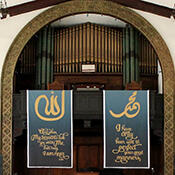 The Prophet Muhammad received his first revelation during an annual devotion at Mount Hira outside of Mecca. The Prophet’s message of tauhid (unity and oneness of God) challenged the polytheistic 7th century Meccan society; Muhammad was met with prosecution. His migration (hijrah) from Mecca to Medina signified the establishment of a model Muslim community and the beginning of the Islamic calendar....
The Prophet Muhammad received his first revelation during an annual devotion at Mount Hira outside of Mecca. The Prophet’s message of tauhid (unity and oneness of God) challenged the polytheistic 7th century Meccan society; Muhammad was met with prosecution. His migration (hijrah) from Mecca to Medina signified the establishment of a model Muslim community and the beginning of the Islamic calendar.... 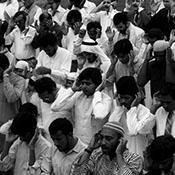

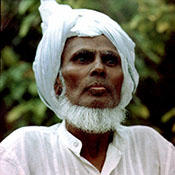
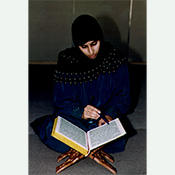
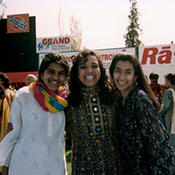
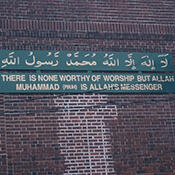 Islamic beliefs inform the worldview, lifestyle, and practices of Muslims worldwide. Amongst Sunni Muslims, the key tenets of faith are belief in: God, angels, revelations, prophets and messengers, the Day of Judgement, and divine decree. While Shi’a Muslims generally agree on these beliefs, they also add Imamate as a foundational tenet.
Islamic beliefs inform the worldview, lifestyle, and practices of Muslims worldwide. Amongst Sunni Muslims, the key tenets of faith are belief in: God, angels, revelations, prophets and messengers, the Day of Judgement, and divine decree. While Shi’a Muslims generally agree on these beliefs, they also add Imamate as a foundational tenet.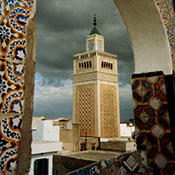
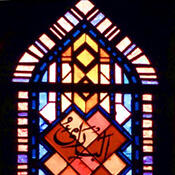 European colonization from the 17th through the 20th century often replaced the religious foundation of Islam and Islamic educational, legal and cultural institutions. The late 19th century saw movements for independence in different Muslim cultures. Current post-colonial states reflect a growing diversity, some declaring themselves secular states (Turkey), with others adhering to a strict codification of Shari’ah law in the national legal system (Pakistan)....
European colonization from the 17th through the 20th century often replaced the religious foundation of Islam and Islamic educational, legal and cultural institutions. The late 19th century saw movements for independence in different Muslim cultures. Current post-colonial states reflect a growing diversity, some declaring themselves secular states (Turkey), with others adhering to a strict codification of Shari’ah law in the national legal system (Pakistan).... 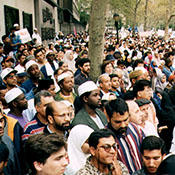
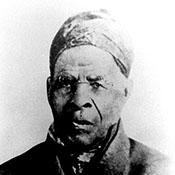
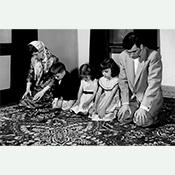
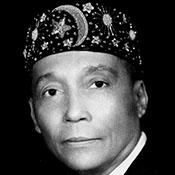

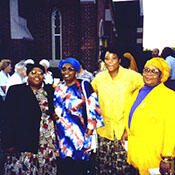 The history of the Nation of Islam continued in the mid-1960s under the leadership of Imam Warith Deen Mohammed. Mohammed focused on reforming the organization with an emphasis on orthodox Islam and interracial and interreligious collaborations. Other important African-American Islam organizations emerged, such as the Dar-ul Islam movement and the Muslim Alliance in North America (MANA)....
The history of the Nation of Islam continued in the mid-1960s under the leadership of Imam Warith Deen Mohammed. Mohammed focused on reforming the organization with an emphasis on orthodox Islam and interracial and interreligious collaborations. Other important African-American Islam organizations emerged, such as the Dar-ul Islam movement and the Muslim Alliance in North America (MANA).... 
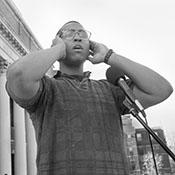
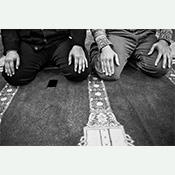
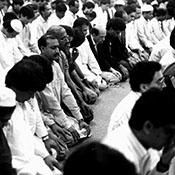
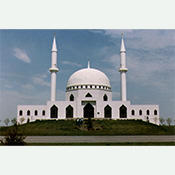
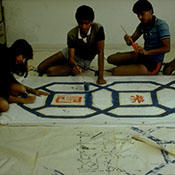
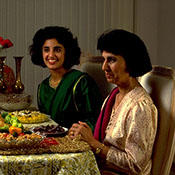
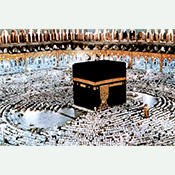
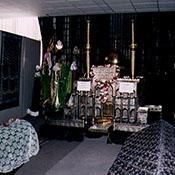
 To mark their commitment to embrace Islam, a new Muslim performs the cleansing of their entire body. They then recite the statements of shahadah in front of two witnesses, proclaiming that “there is no god but God and Muhammad is God’s Messenger.” Da'wah is the effort to present information about Islam to Muslims and non-Muslims....
To mark their commitment to embrace Islam, a new Muslim performs the cleansing of their entire body. They then recite the statements of shahadah in front of two witnesses, proclaiming that “there is no god but God and Muhammad is God’s Messenger.” Da'wah is the effort to present information about Islam to Muslims and non-Muslims.... 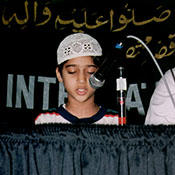
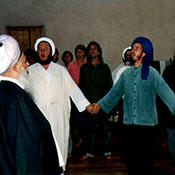
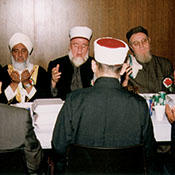
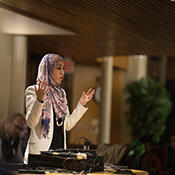 Technological advances have affected Muslims no less than the rest of the world. There are now Muslim talk radio shows, television shows that tell specifically Islamic stories, and online editions of the Qur’an and Hadith....
Technological advances have affected Muslims no less than the rest of the world. There are now Muslim talk radio shows, television shows that tell specifically Islamic stories, and online editions of the Qur’an and Hadith.... 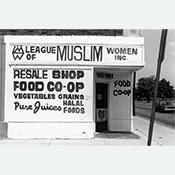
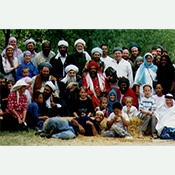
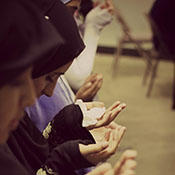

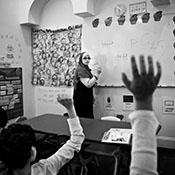
 Muslim chaplains provide faith-based counsel and guidance in institutional contexts (the military, schools, hospitals, and correctional facilities, among others). Historically, Muslim chaplains grew through the da'wah practice of prison ministries, particularly through the Nation of Islam and the activism of Malcolm X (El-Hajj Malik El-Shabazz). Today, Muslim chaplains form networks through various chaplaincy organizations....
Muslim chaplains provide faith-based counsel and guidance in institutional contexts (the military, schools, hospitals, and correctional facilities, among others). Historically, Muslim chaplains grew through the da'wah practice of prison ministries, particularly through the Nation of Islam and the activism of Malcolm X (El-Hajj Malik El-Shabazz). Today, Muslim chaplains form networks through various chaplaincy organizations.... 
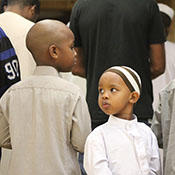
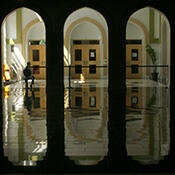 Muslim individuals continue to respond to Islamophobia and seek out open dialogue with broad non-Muslim communities. Some choose political activism, working with organizations such as the Islamic Society of North America (ISNA) or the Council for American-Islamic Relations (CAIR). Some choose public and interfaith dialogues, opening up their homes to non-Muslims, inviting others to introductory classes on Islam, or co-hosting events with people from other religious traditions....
Muslim individuals continue to respond to Islamophobia and seek out open dialogue with broad non-Muslim communities. Some choose political activism, working with organizations such as the Islamic Society of North America (ISNA) or the Council for American-Islamic Relations (CAIR). Some choose public and interfaith dialogues, opening up their homes to non-Muslims, inviting others to introductory classes on Islam, or co-hosting events with people from other religious traditions.... 
